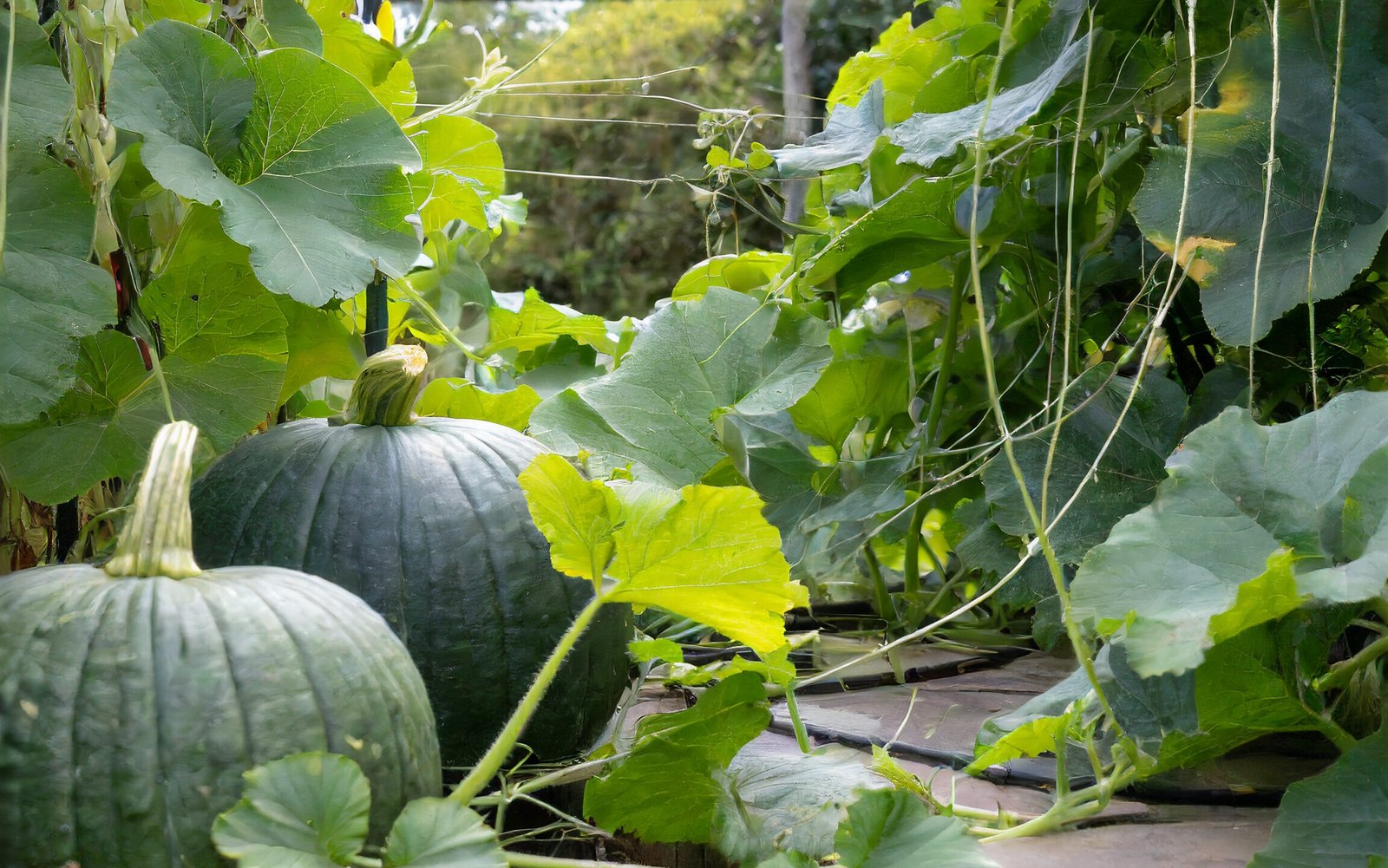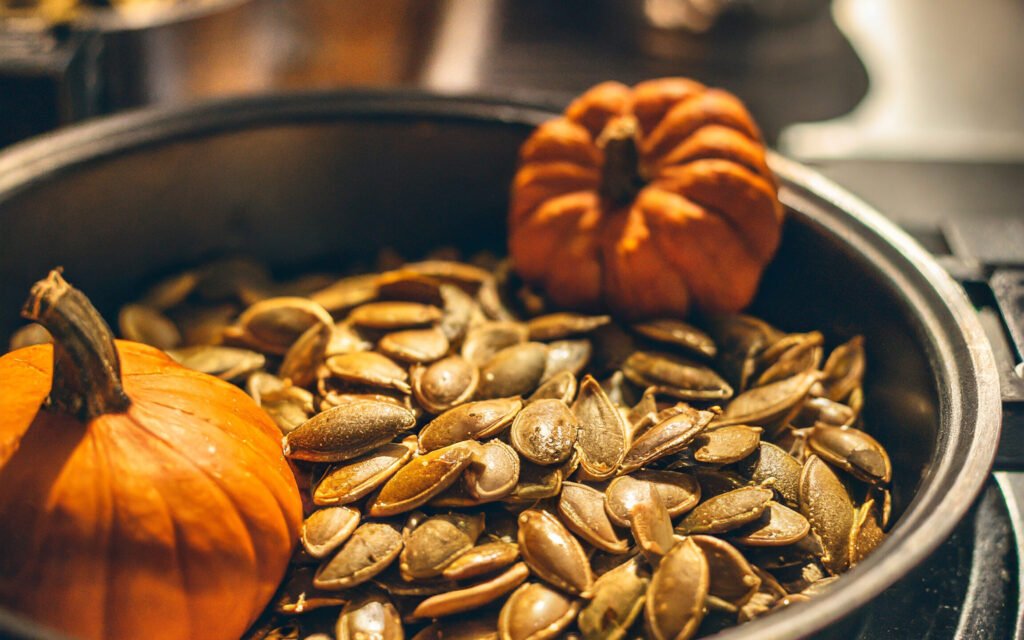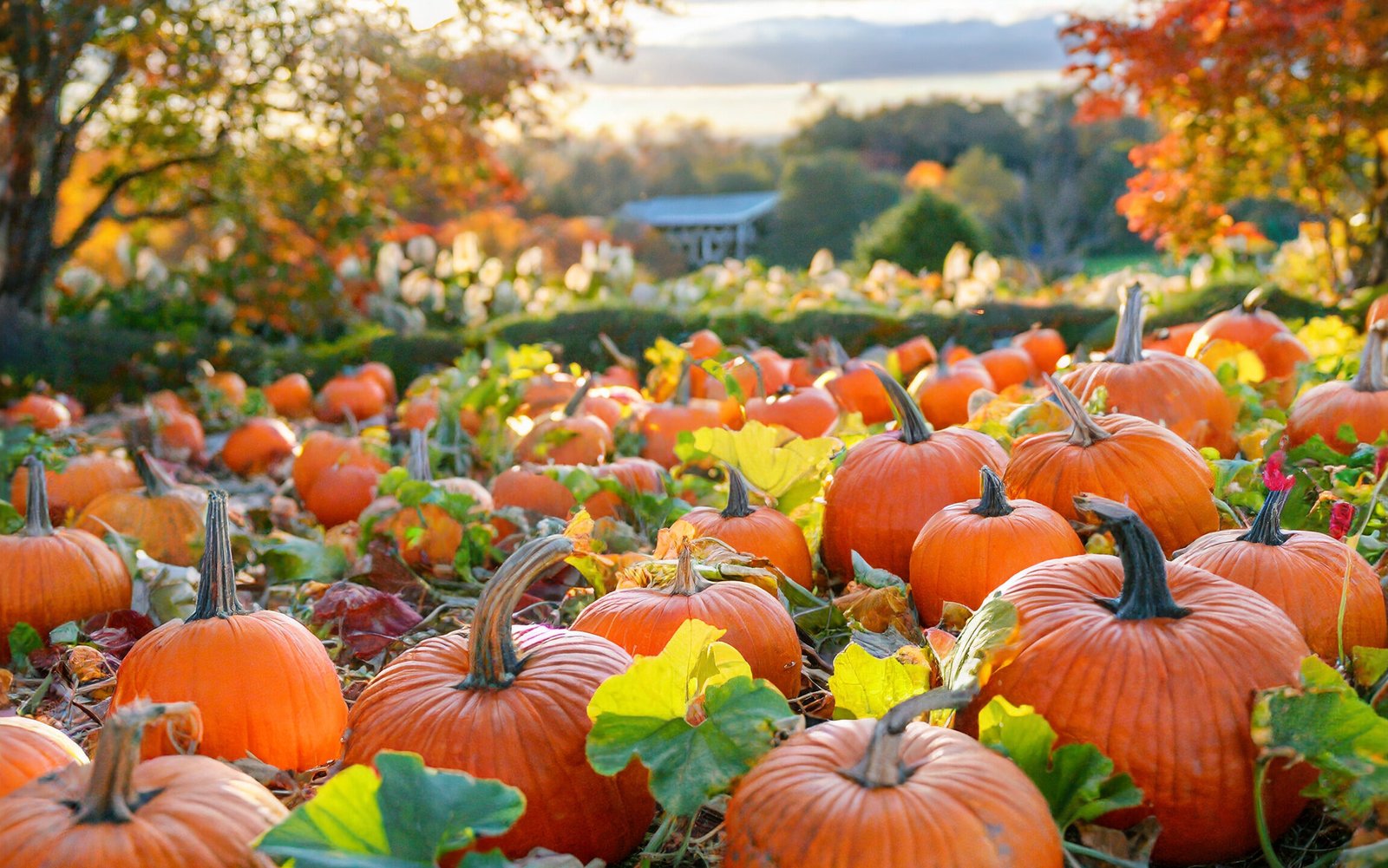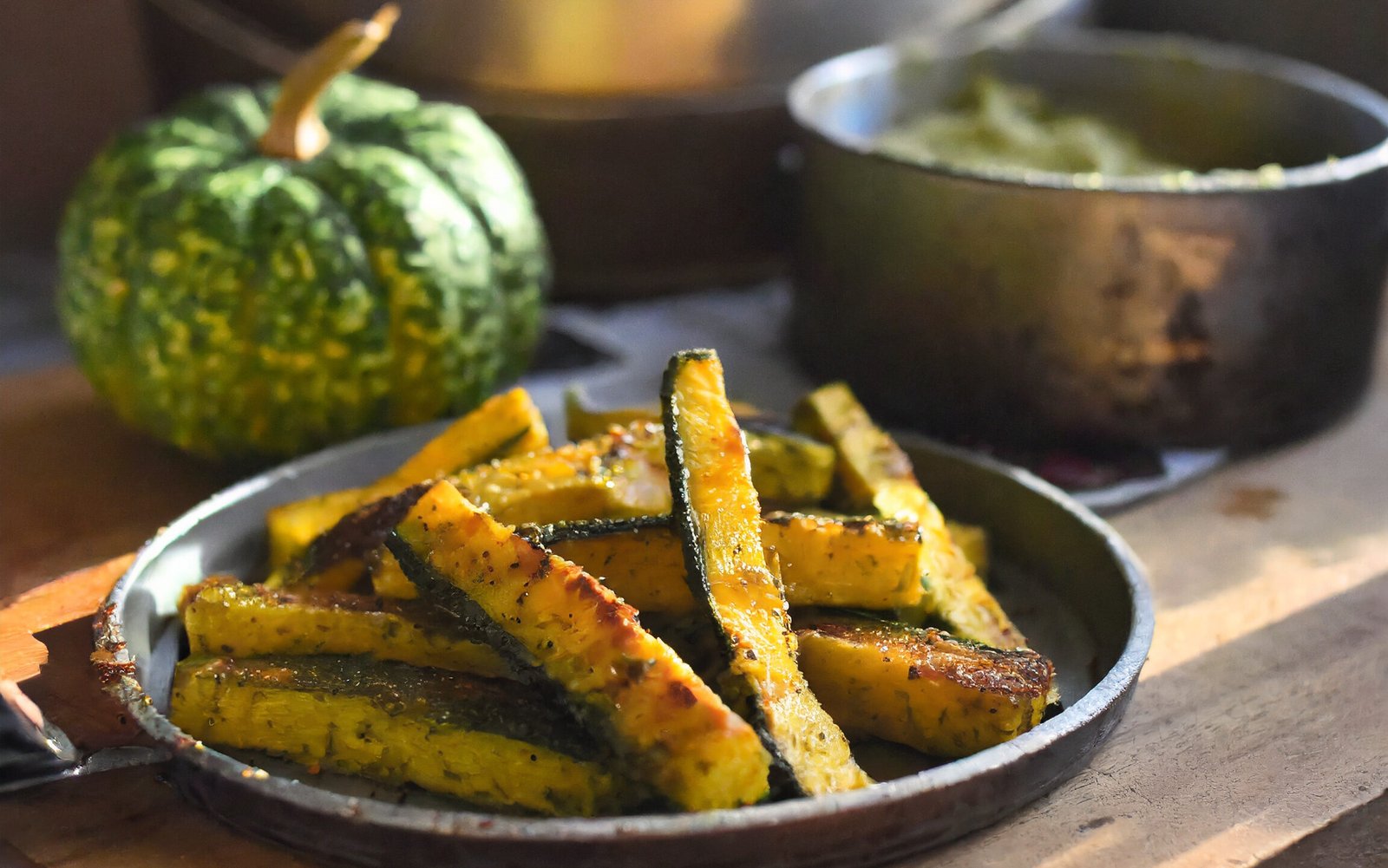Are you ready to dive into the wonderful world of green pumpkins? Whether you’re a pumpkin enthusiast or simply looking for a unique twist on Halloween décor, this ultimate green pumpkin guide has got you covered. From tips on how to grow your own vibrant pumpkins to creative carving ideas that will make your neighbors green with envy, we’ve compiled everything you need to know about these captivating and unconventional gourds. Get ready for an adventure as we explore the endless possibilities and unleash your inner artist in the most unexpected shade of autumn!
Introduction to Green Pumpkins
Green pumpkins may not be as commonly known or popular as their orange counterparts, but they are slowly gaining recognition for their unique appearance and potential health benefits. These pumpkins are exactly what their name suggests – green in color, both on the outside and inside.

Originating from Central America, green pumpkins have been a staple food in Indigenous cultures for centuries. They were later introduced to Europe and made their way to North America through early European settlers. Today, they can be found in various parts of the world and have become an essential ingredient in many cuisines.
Appearance
One of the first things that catch your eye about green pumpkins is their vibrant color. Unlike traditional orange pumpkins, which turn a deep shade of orange when fully ripe, green pumpkins maintain their bright hue even when matured. They typically range from light lime green to dark forest green, with variations in size and shape depending on the specific variety.
The skin of a green pumpkin is usually smooth and firm, making it easy to handle and carve into different shapes if desired. The flesh inside is also a striking pale or light yellow-green color instead of the typical bright orange we associate with other varieties.
What are green pumpkins?
Green pumpkins, also known as “Kakai” or “Lady Godiva” pumpkins, are a unique type of pumpkin that differ in appearance and characteristics from the traditional orange pumpkin. While they may not be as popular as their orange counterparts, green pumpkins have been gaining popularity in recent years due to their eye-catching color and various culinary uses.

Culturally, green pumpkins hold great significance in Native American traditions as they were believed to bring good luck and prosperity when grown alongside other crops. Today, they are primarily grown for ornamental purposes but have also become increasingly popular among chefs and home cooks alike due to their unique flavor profile.
Health Benefits of incorporating green pumpkins into your diet
Incorporating green pumpkins into your diet can provide a wide range of benefits for your overall health and well-being. These unique vegetables are packed with essential nutrients, making them an excellent addition to any balanced diet. Here are some of the top benefits of incorporating green pumpkins into your meals:

1. Rich in Antioxidants
Green pumpkins are high in antioxidants, particularly beta-carotene and vitamin C. These powerful compounds help protect our cells from damage caused by harmful molecules called free radicals. A diet rich in antioxidants is crucial for maintaining good health and reducing the risk of chronic diseases.
2. Boosts Immune System
The high levels of vitamin C found in green pumpkins also make it a great immune-boosting food. Vitamin C helps stimulate the production of white blood cells, which play a vital role in fighting off infections and illnesses.
3. Supports Eye Health
Beta-carotene, another antioxidant found abundantly in green pumpkins, is converted into vitamin A by the body. This nutrient is essential for maintaining healthy eyesight and preventing age-related eye diseases such as cataracts and macular degeneration.
4. Lowers Cholesterol Levels
Green pumpkins are an excellent source of dietary fiber, which has been shown to lower cholesterol levels. Fiber binds to cholesterol in the digestive tract, preventing its absorption into the bloodstream and promoting its elimination from the body.
5. Regulates Blood Sugar Levels
Fiber also plays a crucial role in regulating blood sugar levels. It slows down the absorption of sugar into the bloodstream, preventing spikes and crashes in blood sugar levels. This can be especially beneficial for individuals with diabetes or those at risk of developing it.
6. Supports Digestive Health
The high fiber content in green pumpkins not only helps regulate blood sugar and lower cholesterol, but it also promotes a healthy digestive system. Fiber adds bulk to stools, making them easier to pass and promoting regular bowel movements.
7. Low in Calories
Green pumpkins are low in calories, making them an excellent choice for those watching their weight. One cup of cooked pumpkin contains just 49 calories, making it a satisfying yet guilt-free addition to any meal.
8. Versatile and Delicious
Green pumpkins can be incorporated into a wide variety of dishes, from soups and stews to salads and smoothies. They have a mild flavor that pairs well with many different ingredients, making them a versatile and delicious addition to your diet.
Different Varieties & types of Green Pumpkins
Green pumpkins are a unique variety of pumpkin that is often overlooked in the world of fall produce. While orange pumpkins may be the most popular choice for carving and decorating during the autumn season, green pumpkins offer a fresh and unexpected twist to traditional pumpkin dishes. If you’re looking to add some variety to your pumpkin patch this year, read on to learn about the different types of green pumpkins available.
1. Green Striped Cushaw Pumpkin

One of the most common types of green pumpkins is the Green Striped Cushaw Pumpkin. These oblong-shaped pumpkins have light green skin with dark green stripes, giving them a unique and eye-catching appearance. They have a mild, sweet flavor and can range in size from 6-12 pounds. The flesh of these pumpkins is perfect for baking into pies or roasting and adding to soups or stews.
2. Jarrahdale Pumpkin

Originating from Australia, the Jarrahdale Pumpkin has become increasingly popular in recent years due to its stunning blue-green skin and flattened, ribbed shape. This type of pumpkin has dense, sweet flesh that is perfect for making purees or soups. Its distinctive appearance also makes it a great option for fall decorations.
3. Kakai Pumpkin

Known for their striking black-and-white striped skin, Kakai Pumpkins are not only visually appealing but also highly nutritious as their seeds are edible and packed with protein and healthy fats. These small-to-medium sized pumpkins have a nutty flavor and can be used in a variety of dishes, including soups, salads, and baked goods.
4. Green Warty Goblin Pumpkin

As its name suggests, the Green Warty Goblin Pumpkin is covered in small, bumpy warts that give it a unique and spooky appearance. These medium-sized pumpkins have bright green skin and dense flesh that is ideal for roasting or making into pies. They also make great decorations for Halloween.
5. Lumina Pumpkin

Lumina Pumpkins are known for their beautiful white skin that can range from pale ivory to pure white. While they may not be technically green in color, their unique appearance makes them stand out among other pumpkins. Their flesh is sweet and smooth, making them perfect for baking into pies or roasting with savory herbs and spices.
How to identify and choose the right one for you
When it comes to choosing the right green pumpkin for your needs, there are a few key factors to consider. Here are some tips to help you identify and select the perfect one for you.
1. Identify the type of green pumpkin
There are several types of green pumpkins available in the market, each with its own unique characteristics. Some common varieties include Japanese Kabocha, Hubbard, and Cinderella pumpkins. Do your research on different types and determine which one best suits your preferences and cooking needs.
2. Check for ripeness
A ripe green pumpkin will have a deep, dark green skin with no signs of yellowing or soft spots. Avoid pumpkins that have any bruises or cuts on their skin as this could indicate decay or mold inside.
3. Consider size
Green pumpkins come in various sizes, from small ones that can fit in the palm of your hand to large ones that can weigh up to 10 pounds or more. Think about what you’ll be using the pumpkin for and choose a size accordingly. For example, smaller ones are great for roasting whole while larger ones are better for carving or making soups and stews.
4. Look at the stem
The stem is an important indicator of a pumpkin’s freshness. It should be sturdy and firmly attached to the body of the fruit. If it feels loose or looks dry, it may be an old pumpkin that has been sitting around for too long.
5. Consider shelf life
Green pumpkins have a longer shelf life compared to their orange counterparts. However, different varieties may have varying shelf lives.
For example: Kabocha pumpkins can last up to 3 months when stored in a cool, dry place, while Hubbard pumpkins can last up to 6 months. Consider your storage options and choose a pumpkin with an appropriate shelf life.
6. Smell
A fresh green pumpkin should have a mild earthy smell without any strong or unpleasant odors. If the pumpkin has a sour or musty smell, it may be rotten inside.
7. Know your purpose
Lastly, consider what you’ll be using the pumpkin for. If you’re planning on carving it for Halloween decorations, then looks and size may be more important to you. On the other hand, if you’re planning on cooking with it, consider factors such as texture and sweetness when choosing the right one for your recipe.
Nutritional Value Breakdown of vitamins and minerals found in green pumpkins
Green pumpkins are a great addition to any diet, as they are packed with essential vitamins and minerals. In this section, we will break down the specific nutrients found in green pumpkins and their health benefits.
| Nutrient | Green Pumpkin Content | Role in Health |
| Vitamin A | Over 200% of recommended daily intake | Vision, immune function, skin health |
| Vitamin C | About 20% of recommended daily intake | Immunity, collagen production, iron absorption |
| Potassium | About 10% of recommended daily intake | Fluid balance, nerve and muscle function |
| Iron | About 8% of recommended daily intake | Hemoglobin production, preventing fatigue |
| Magnesium | About 6% of recommended daily intake | Energy production, nerve function, bone health |
| Zinc | About 5% of recommended daily intake | Immune function, wound healing |
| B Vitamins | Thiamine, riboflavin, niacin | Energy metabolism, nervous system function |
| Fiber | About 3 grams per cup | Digestive health, satiety after meals |
| Antioxidants | Beta-carotene, lutein | Cell protection from free radical damage |
Cooking with Green Pumpkins
Green pumpkins may not be as popular as their orange counterparts, but they are just as versatile and delicious in the kitchen. From savory dishes to sweet treats, there are endless possibilities when it comes to cooking with green pumpkins.
In this section, we will explore some of the best ways to use green pumpkins in your cooking and provide you with some mouth-watering recipes to try at home.
1. Roasted Green Pumpkin Soup
Roasted Green Pumpkin Soup is a hearty and delicious dish for fall.

It’s nutrient-packed and has a rich, warming flavor.
Ingredients:
- Small green pumpkin
- Butter
- Olive oil
- Onion
- Garlic
- Vegetable broth
- Heavy cream
- Herbs and spices of your choice
- Preheat your oven to 375°F (190°C).
Instruction
- Cut the pumpkin in half and remove the seeds (you can roast them separately).
- Place the pumpkin halves on a baking sheet with parchment paper, drizzle with olive oil, and season with salt and pepper.
- Roast in the oven for about 45 minutes until the pumpkin flesh is fork-tender.
- Let it cool for 10-15 minutes, then scoop out the roasted flesh.
- In a large pot, melt butter with olive oil over medium heat.
- Sauté chopped onions and minced garlic until translucent.
- Add the roasted pumpkin flesh and your choice of spices or herbs, like thyme or rosemary.
2. Baked Green Pumpkin Fries
Baked Green Pumpkin Fries are a healthy and delicious alternative to traditional french fries, perfect for fall.

Ingredients
- Fresh green pumpkin slices
- Flour
- Breadcrumbs
- Eggs
- Seasoning of your choice
Instruction
- Start by peeling the skin off the green pumpkin and cutting it into thin fry-sized slices. Remove all the seeds.
- Prepare three separate bowls: one with flour, one with beaten eggs, and one with breadcrumbs mixed with your preferred seasoning.
- Dip each pumpkin slice into the flour, then into the egg mixture, and finally coat it well with seasoned breadcrumbs.
- Instead of deep-frying, bake them in the oven for a healthier option.
- Preheat your oven to 400 degrees Fahrenheit and line a baking sheet with parchment paper.
- Place each coated pumpkin slice on the baking sheet in a single layer without overcrowding.
- Bake for 25-30 minutes until they turn golden brown on both sides, flipping them halfway for even crispiness.
- Let them cool for a few minutes before serving as a side dish or snack with your favorite dipping sauce. Enjoy!
3. Green Pumpkin and Kale Salad
Green Pumpkin and Kale Salad is a light and nutritious fall dish that combines the flavors of pumpkin and kale with seasonal ingredients.

Ingredients
- Half a small green pumpkin
- Kale
- Roasted chickpeas
- Olive oil, salt, pepper, and seasonings for the chickpeas
- Toasted pumpkin seeds
- Dried cranberries or chopped figs
- Dressing options: balsamic vinaigrette or honey mustard
Instruction
- Start by cutting the green pumpkin into wedges, removing seeds, and peeling the skin. Cut the flesh into bite-sized cubes.
- Prepare the kale by removing tough stems and tearing the leaves into smaller pieces. Wash and spin dry.
- For added texture and flavor, roast chickpeas in olive oil, salt, pepper, and seasonings until crispy.
Assemble the salad
- Begin with a bed of fresh kale in a serving dish or bowl.
- Add the cubed green pumpkin on top.
- Sprinkle toasted pumpkin seeds over the salad.
- Add dried cranberries or chopped figs for sweetness and color.
- Dress your salad with either balsamic vinaigrette or honey mustard dressing to complement the flavors.
- Enjoy as a side dish or add grilled chicken or tofu for a complete meal.
Conclusion
As we have explored, pumpkins are not only a staple of fall decor but also a nutritious and versatile ingredient. With this ultimate green pumpkin guide, you now have all the knowledge and tips to make the most out of your pumpkin experience. From picking the perfect pumpkin to trying out new recipes, there is something for everyone to enjoy. So let’s embrace all things pumpkin and get creative in the kitchen! Happy fall y’all!
FAQs
FAQs (Frequently Asked Questions) are a common part of learning about any new topic, and pumpkins are no exception. Here, we have compiled answers to the most commonly asked questions about green pumpkins to help you gain a better understanding of this unique variety.
What exactly is a green pumpkin?
A green pumpkin is simply a pumpkin that has not fully ripened yet. Unlike the traditional orange-colored pumpkins that are ready for harvest in the fall, green pumpkins usually still have some maturing to do.
When is the best time to pick green pumpkins?
The exact timing for picking green pumpkins can vary depending on factors such as climate and the specific type of pumpkin plant. However, as a general rule, it is best to wait until the vine starts dying back and the stem connecting the pumpkin turns brown before harvesting.
Can I eat green pumpkins?
Yes, you can eat green pumpkins! While they may not be as sweet or flavorful as fully ripened orange ones, they can still be used in various dishes such as soups, stews, and even desserts.
How long does it take for a green pumpkin to turn orange?
This also varies depending on growing conditions and type of pumpkin plant. Generally, it takes around 1-2 weeks for a mature green pumpkin to turn orange after being picked from the vine.
Are there any health benefits to eating green pumpkins?
Yes, green pumpkins are a good source of fiber, vitamins A and C, and potassium. They are also low in calories and high in water content.
Can I use green pumpkins for carving or decorating?
Green pumpkins can be used for carving and decorating, but they may not hold up as well as fully ripened ones. They may also have a more muted color when compared to orange pumpkins.
Are there any special care instructions for storing green pumpkins?
It is best to store green pumpkins in a cool, dry place with good ventilation. Avoid placing them near heat sources or in direct sunlight. Make sure to check them regularly for signs of rotting or mold and discard any that show these signs.
How can I tell if a pumpkin is still green or if it has started ripening?
Look for a deep, even green color on the skin of the pumpkin. If there are any patches of yellow or orange, it is likely starting to ripen. You can also gently press on the skin – if it feels firm and doesn’t give much, it is still mostly green.





